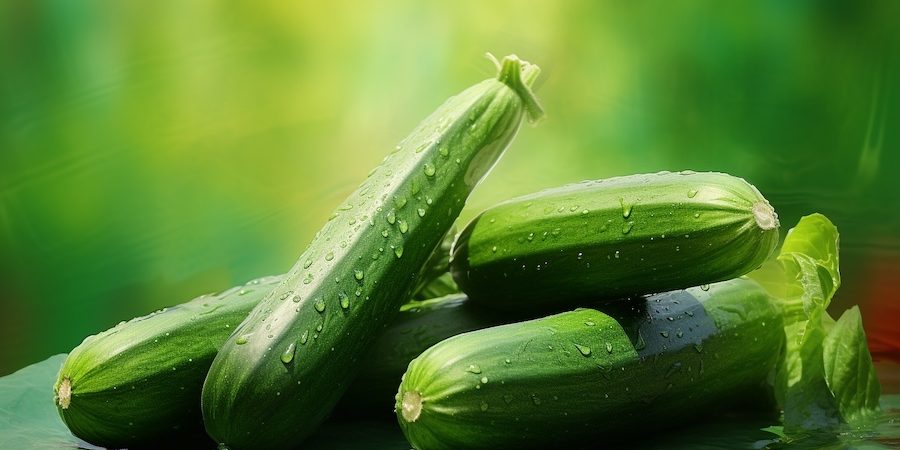With the support of our stable Hungarian producer base, this vegetable is always available in high quality in our wholesale assortment – ask us for an offer!
Zucchini, also known as tender pumpkin, is one of the most popular and widespread vegetables of our time, and has made its way into European cuisines thanks to its freshness, neutral flavour and ease of preparation.
What do you need to know about zucchinis?
The zucchini originated in Central and South America, but arrived in Europe in the modern era, in the 16th century to be precise. The vegetable became very popular in Italy, where it began to be called zucchini (a diminutive of the Italian word zucca, meaning pumpkin). This summer squash belongs to the family of the cucurbits, like pumpkins and cucumbers.
Its health benefits are remarkable: extremely low in calories, it is also rich in fibre, minerals (magnesium, potassium) and vitamins (vitamins A, C and K). Its high water content makes it an excellent hydrator, aids digestion and can help reduce the risk of cardiovascular disease. It also contains antioxidants that help slow down the ageing process and strengthen the immune system.
Cultivation
In Europe, Italy and Spain are the leading producers of zucchinis, with France also exporting a significant quantity. In Hungary, it has become popular in the last decades and its production has been increasing. In Hungary, both field and greenhouse production are widespread, but field production still dominates. In Europe, it mainly prefers the favourable climate of Mediterranean countries, where long summer days and sufficient sunshine help it to grow.
In Hungary, the zucchini season lasts from June to the end of September. During this period, it is easy to find fresh, home-grown zucchinis on the shelves. During the winter months, it is mainly Spanish or Italian imports that are available.
How to choose good quality zucchinis?
When buying zucchinis, always check the size, colour and texture of the vegetable. Smaller pieces, up to 20-25 cm long, are the best as they are still tender and don’t have too many seeds. The skin of fresh zucchinis is bright green, free from bruises and blemishes, and the surface is smooth, firm and shiny. Avoid specimens that are wrinkled or soft to the touch. Freshness is also indicated if the zucchini stalk is still slightly moist and green.
Kitchen use
The versatility of zucchinis makes them one of the most popular vegetables in the kitchen. Raw, grated or sliced into salads, baked, grilled, stir-fried, stuffed, used in stews, soups or even in cakes. It combines very well with garlic, basil, rosemary, parmesan and tomatoes. It has the advantage of being neutral in flavour, which makes it a good match for almost all spices and seasonings.
Storage suggestions
After purchase, store in the refrigerator, preferably in the vegetable compartment. This will keep it fresh for up to a week. It is best to store whole, unwashed, as moisture can accelerate spoilage. It can also be frozen, in which case it is best to store it sliced and blanched, so that it can be stored for months.
Interesting facts about zucchinis
Few people know that zucchinis are available not only in green but also in yellow. There is no significant difference in taste and texture between the two colours, but they can add interest and variety to your dishes. Also interesting is the fact that although it is treated as a vegetable, botanically it is actually a fruit, being a fruit of the squash family.
Tips for preparing zucchini dishes
Zucchini toast: grate the vegetables, mix with egg, garlic, salt and pepper, then bake into delicious crispy toast.
Vegetable spaghetti: spiralized or thinly sliced, it can be substituted for pasta to make light, healthy meals.
Stuffed zucchinis: cut in half, stuffed with minced meat, rice, herbs and tomato sauce and baked in the oven for a delicious side dish.
Zucchinis are a popular, healthy, delicious and versatile vegetable.


